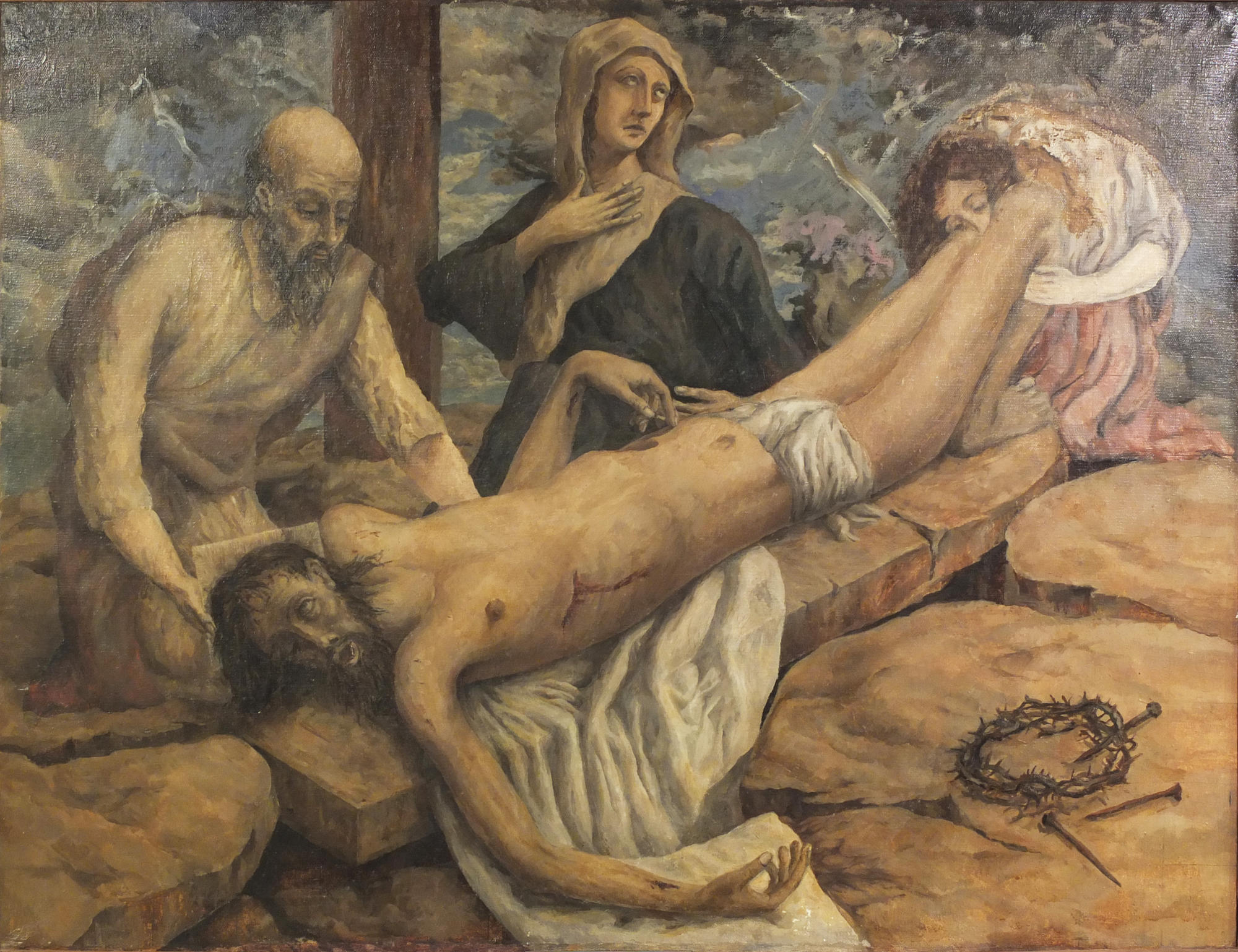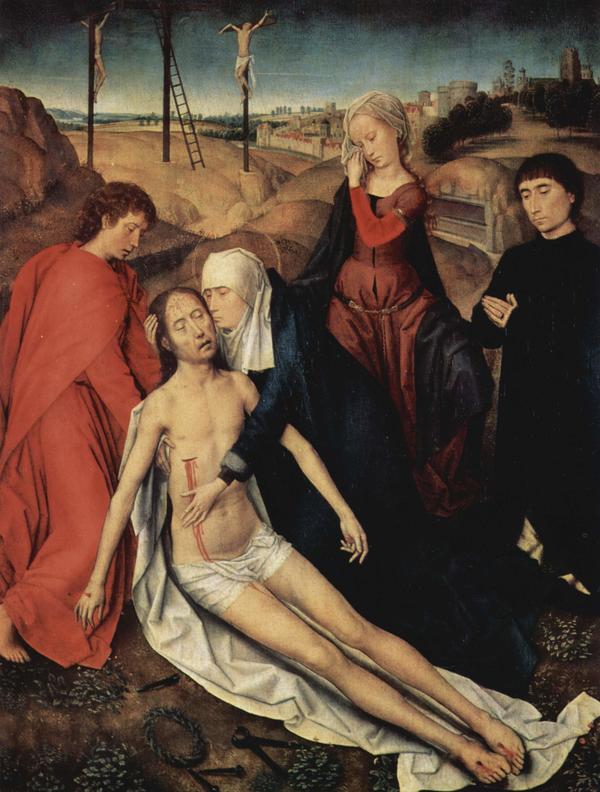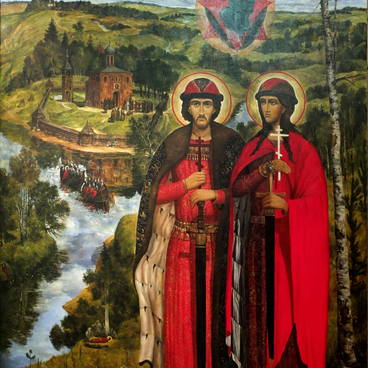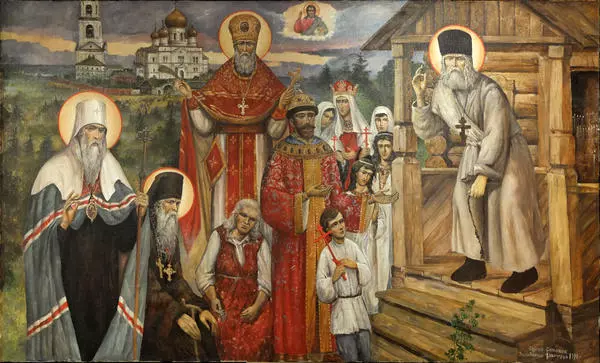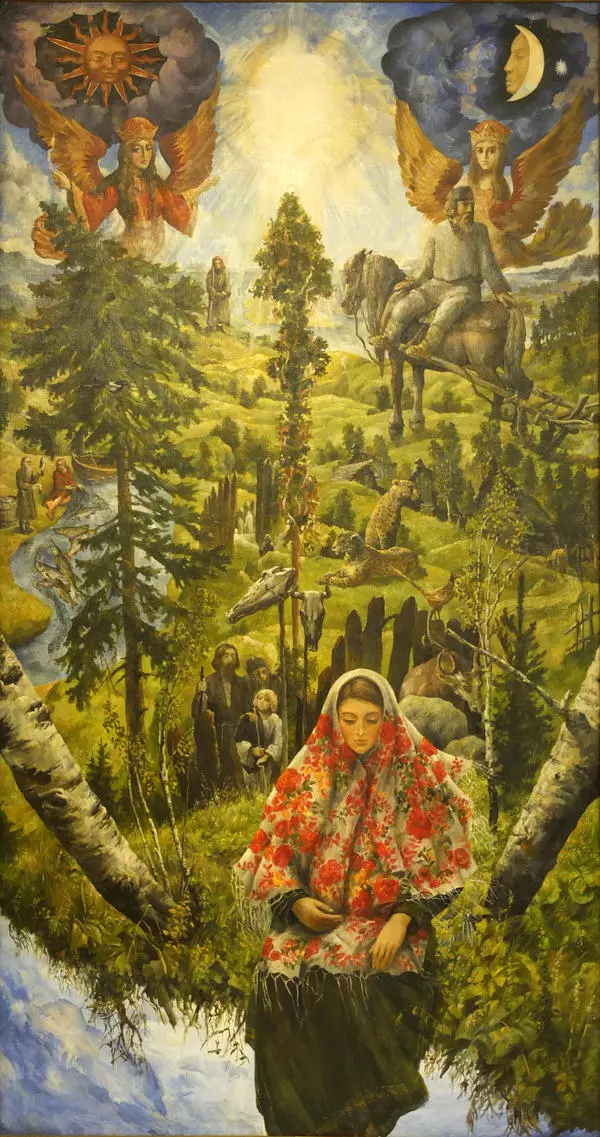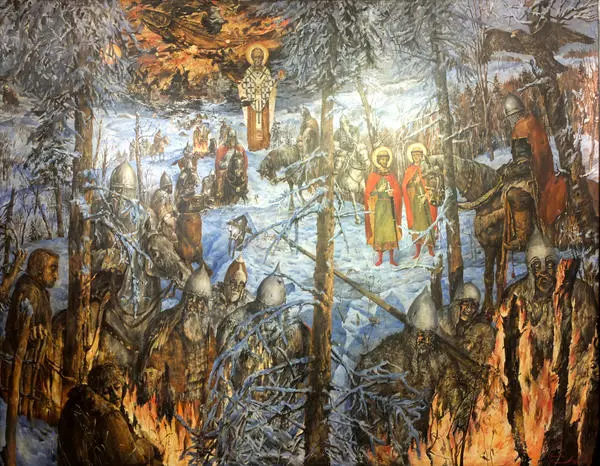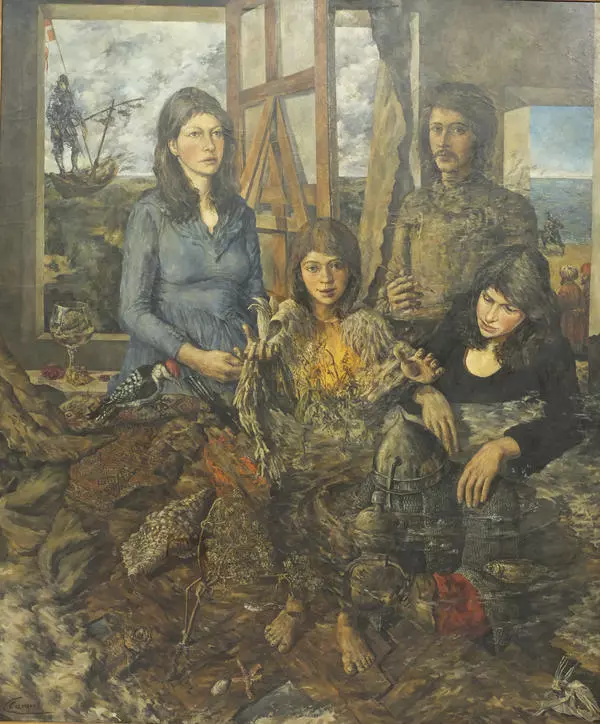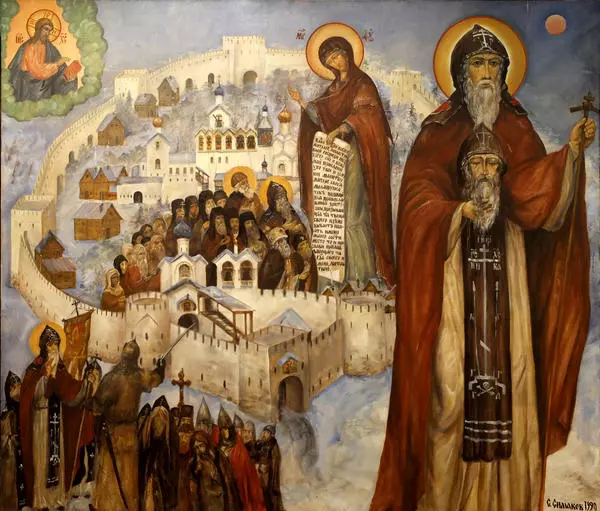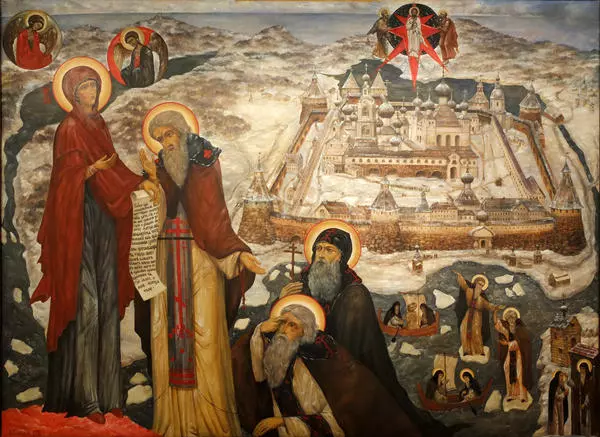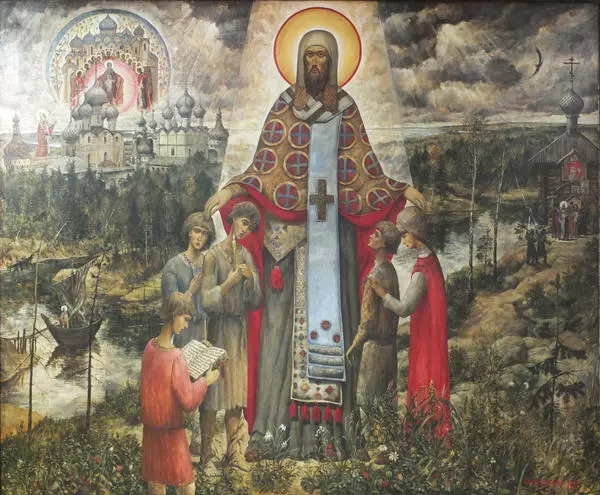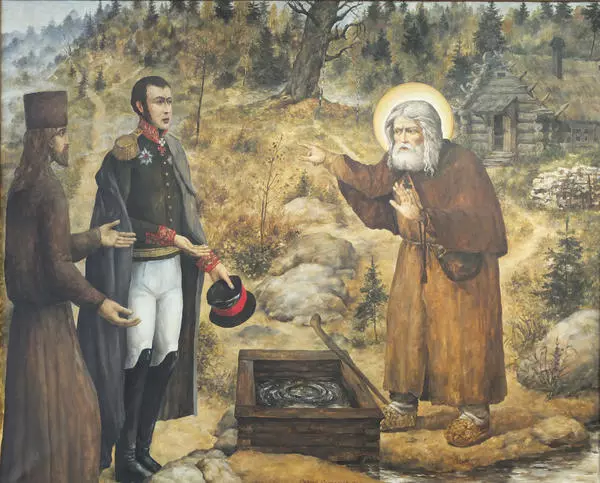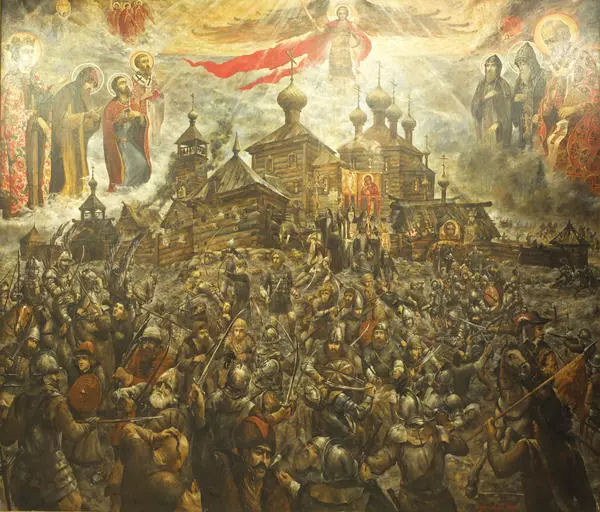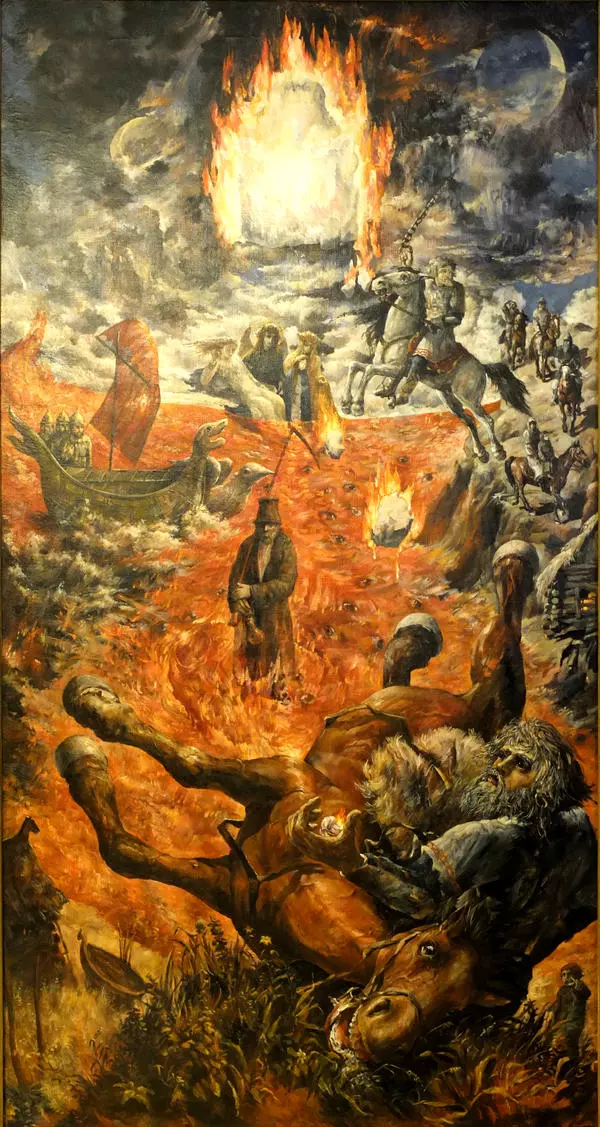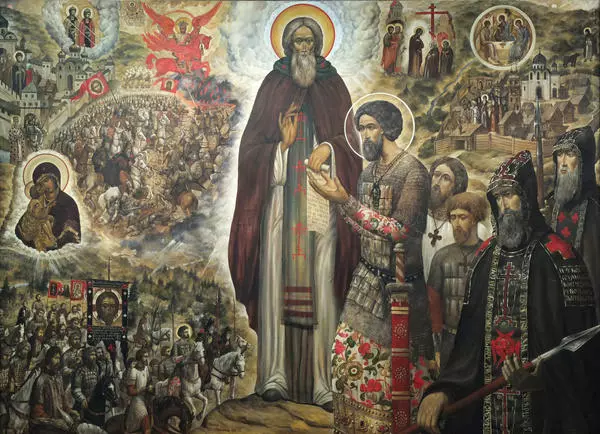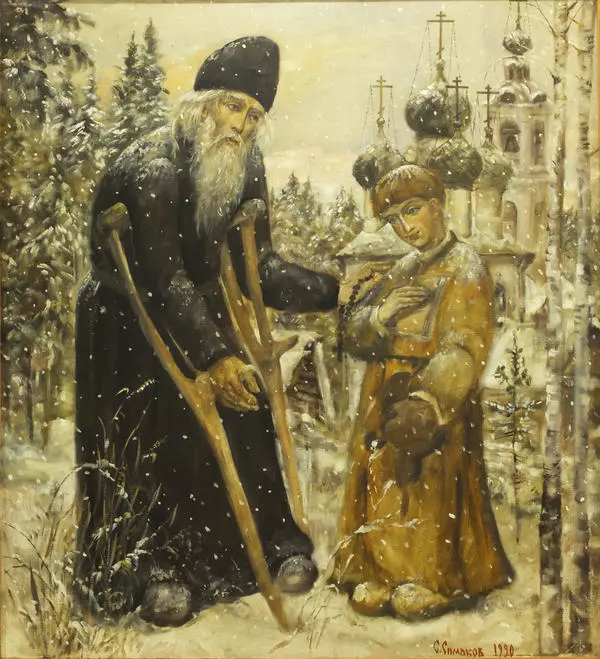Sergei Simakov painted Golgotha in 1975. It was a time when he went in for impressionist and surrealistic art, but this particular picture follows the West European art tradition: its characteristic features include naturalism and a focus on the idea of martyrdom and sacrifice.
The picture shows Jesus Christ’s deposition from the cross. Legend has it that he was crucified on Golgotha, a rock or a hill outside the city walls of Jerusalem. Christ’s body is painted diagonally, which divides the picture space in two parts. Joseph of Arimathaea, a Judaic church elder in whose tomb Jesus was buried, delicately holds his body. On his right, there is God’s mother casting a look at the sky. Mary Magdalene, the first witness of the future resurrection, leans to Christ’s legs.
In his book, A story of woe and evil according to [film director] Alexei Balabanov, Simakov wrote that he had painted Golgotha echoing the gloomy and naturalistic picture of The body of the dead Christ in the tomb by German master Hans Holbein the Younger. In both pictures, Christ’s body is elongated and his face awry with painful sufferings.
The picture shows Jesus Christ’s deposition from the cross. Legend has it that he was crucified on Golgotha, a rock or a hill outside the city walls of Jerusalem. Christ’s body is painted diagonally, which divides the picture space in two parts. Joseph of Arimathaea, a Judaic church elder in whose tomb Jesus was buried, delicately holds his body. On his right, there is God’s mother casting a look at the sky. Mary Magdalene, the first witness of the future resurrection, leans to Christ’s legs.
In his book, A story of woe and evil according to [film director] Alexei Balabanov, Simakov wrote that he had painted Golgotha echoing the gloomy and naturalistic picture of The body of the dead Christ in the tomb by German master Hans Holbein the Younger. In both pictures, Christ’s body is elongated and his face awry with painful sufferings.
